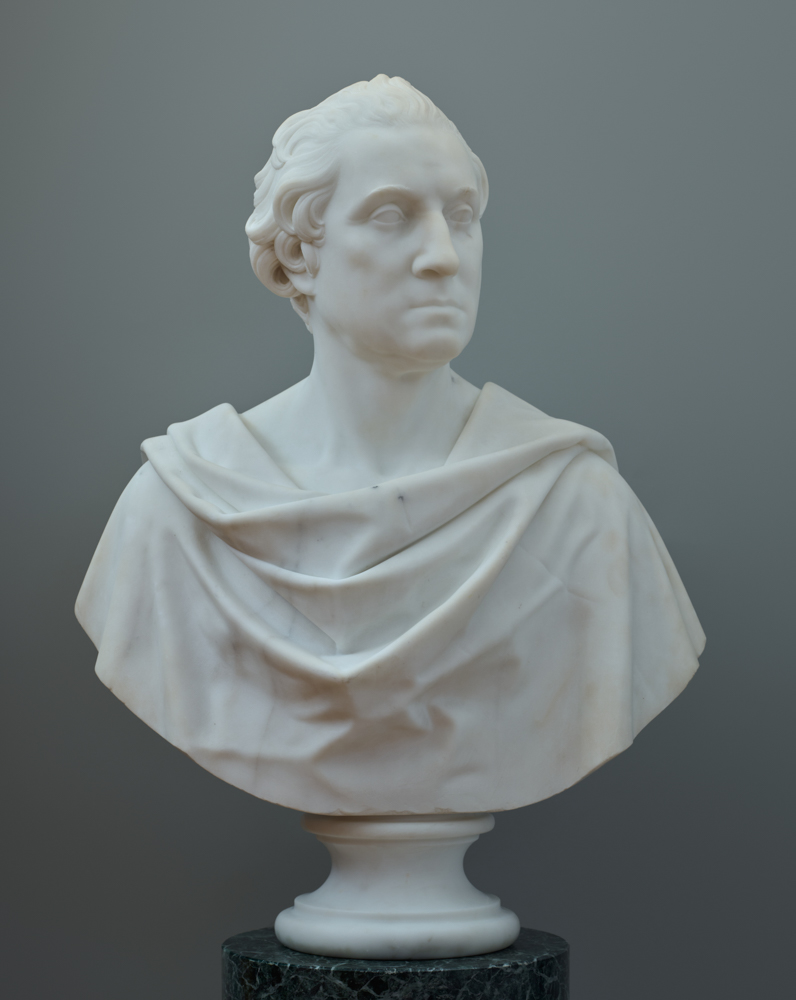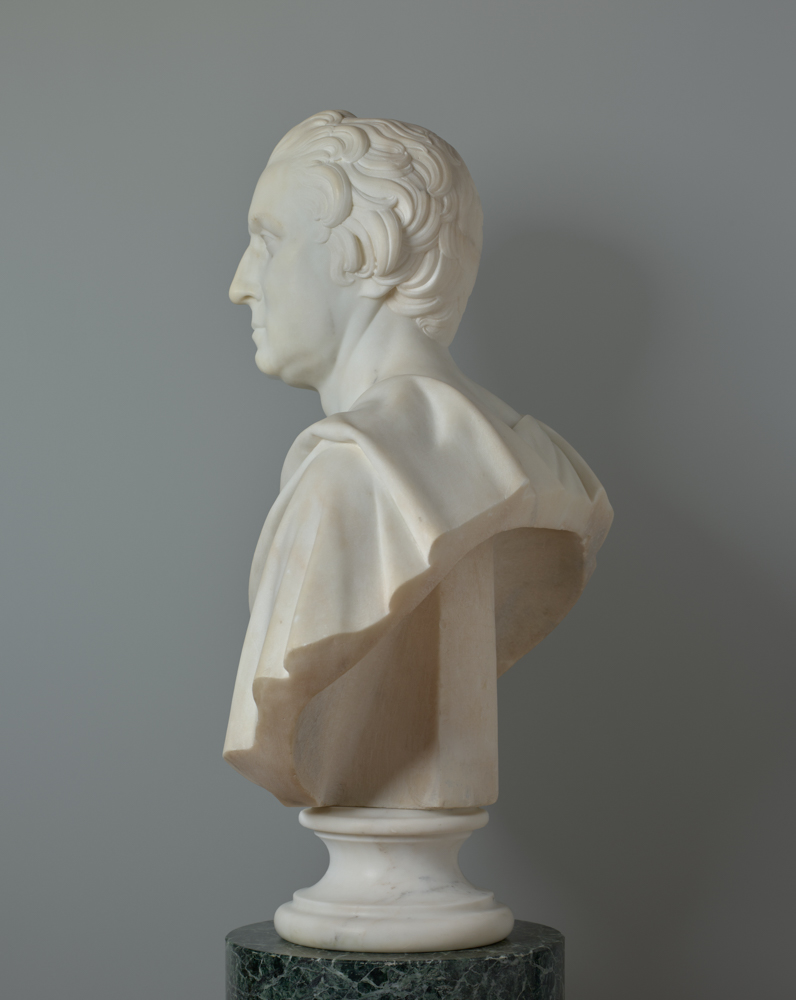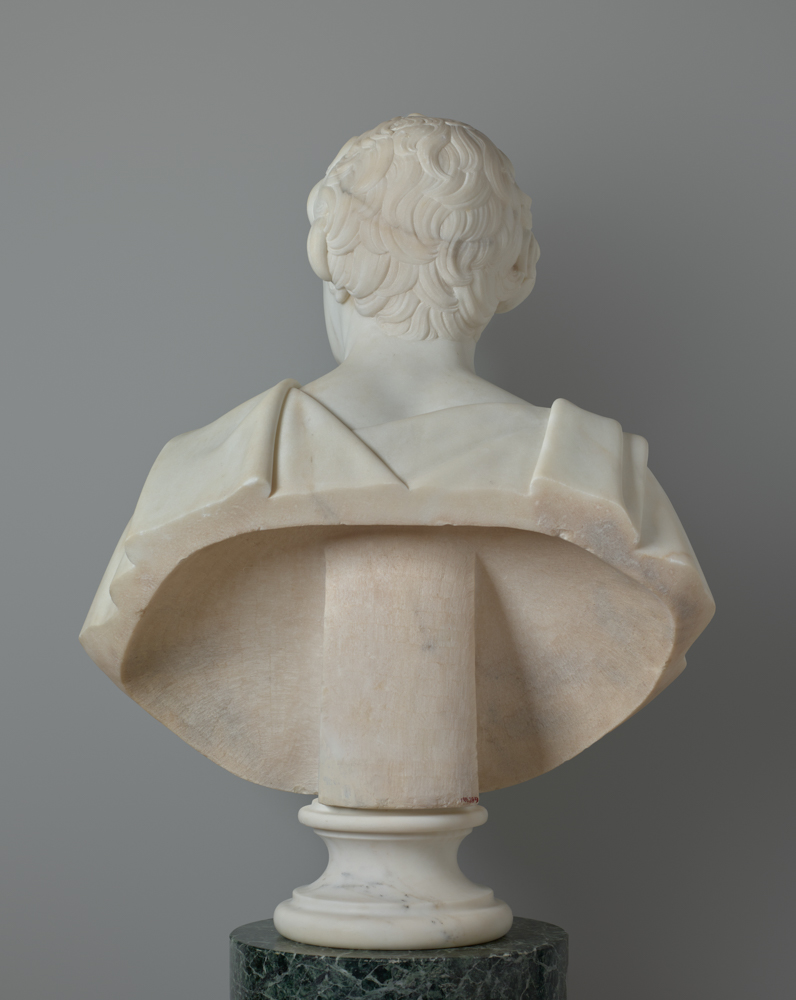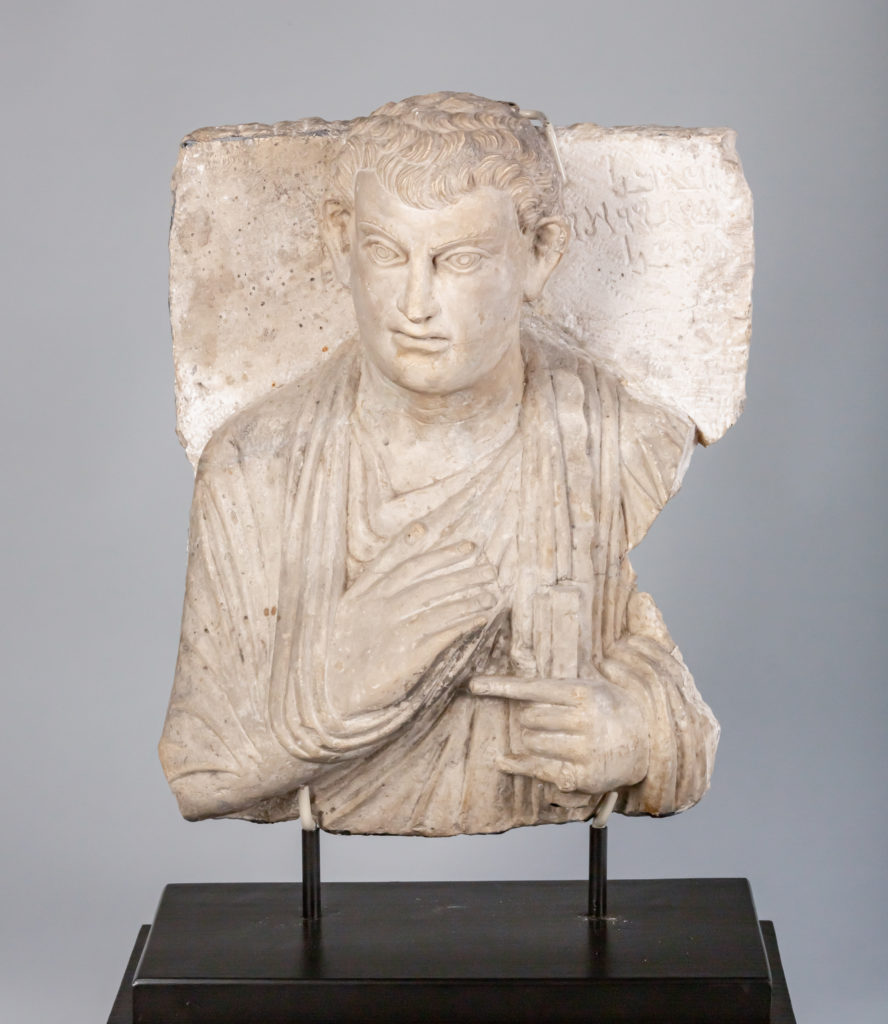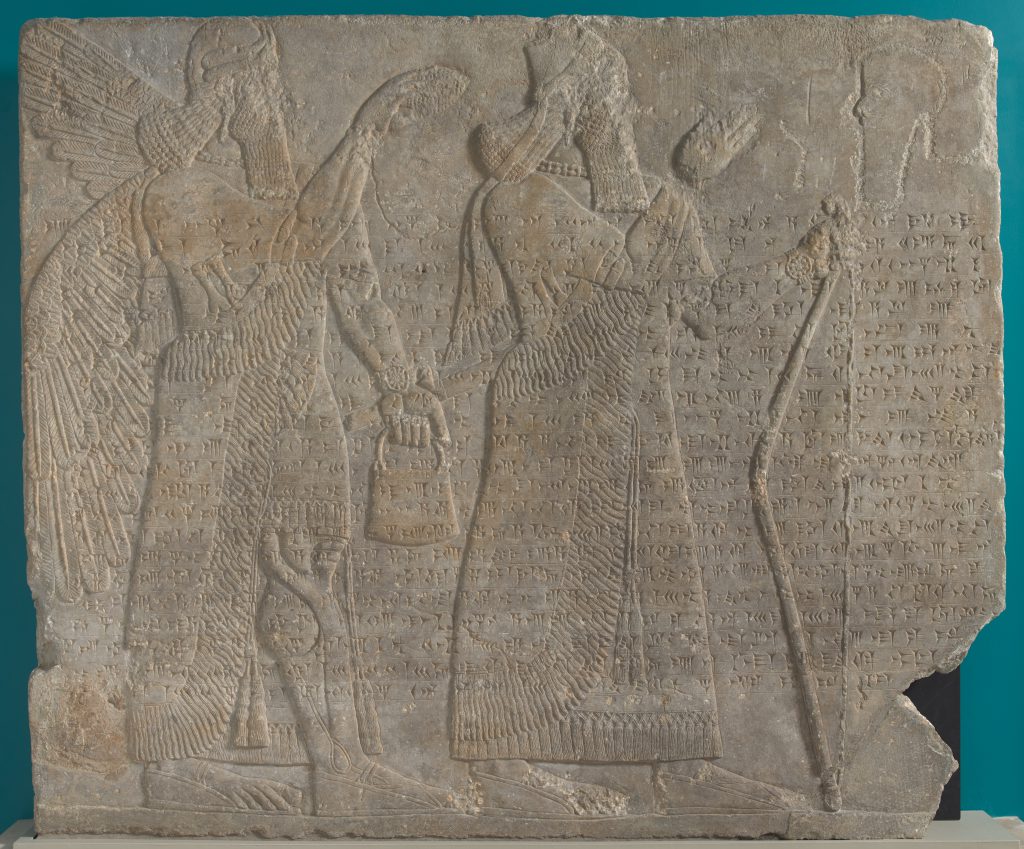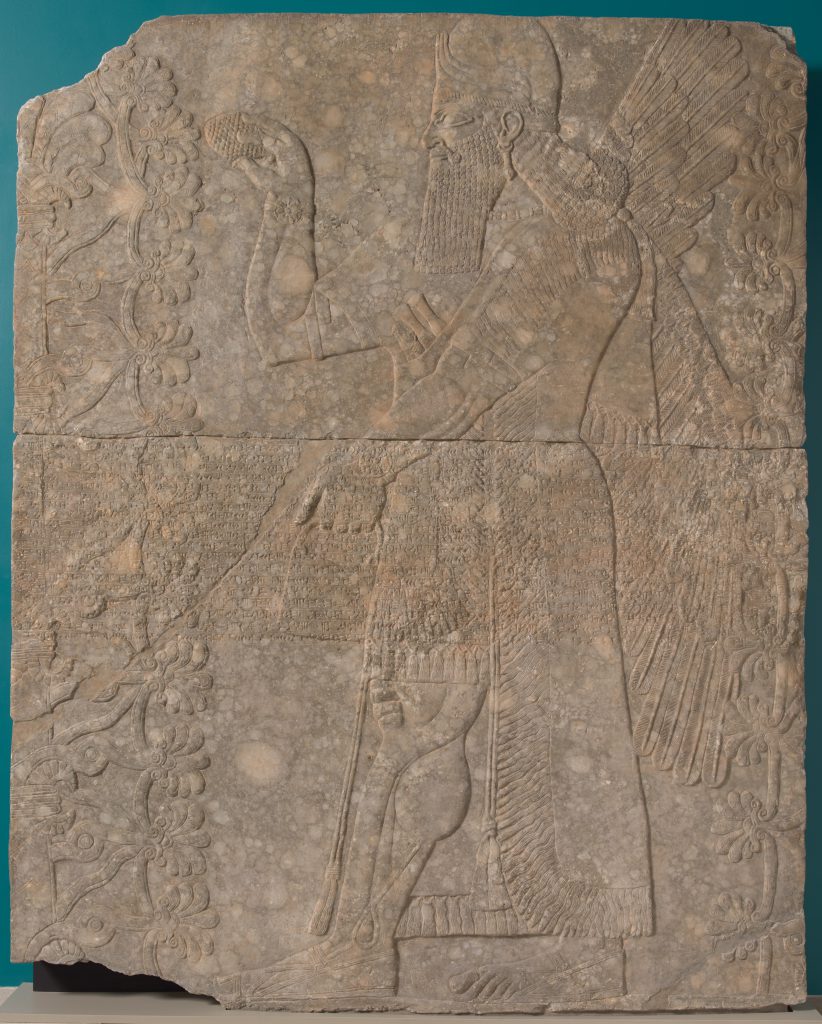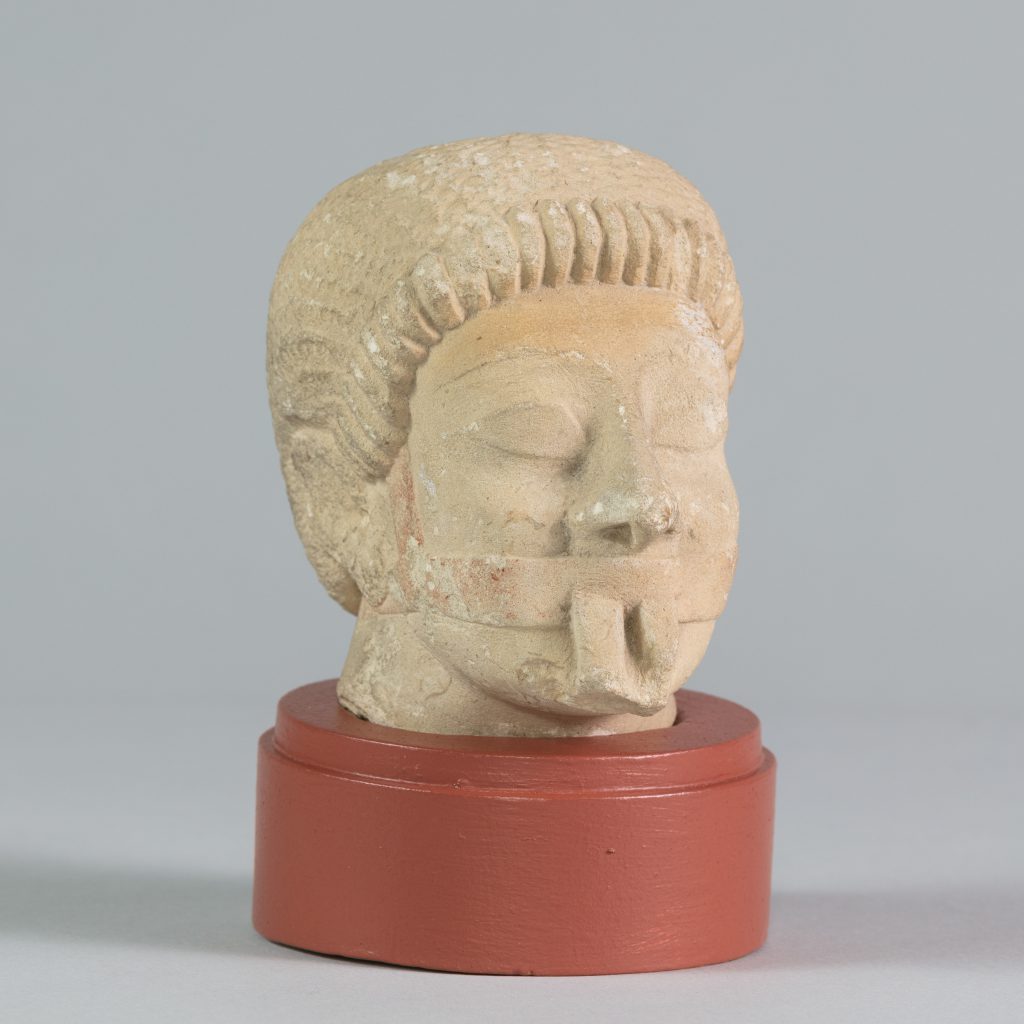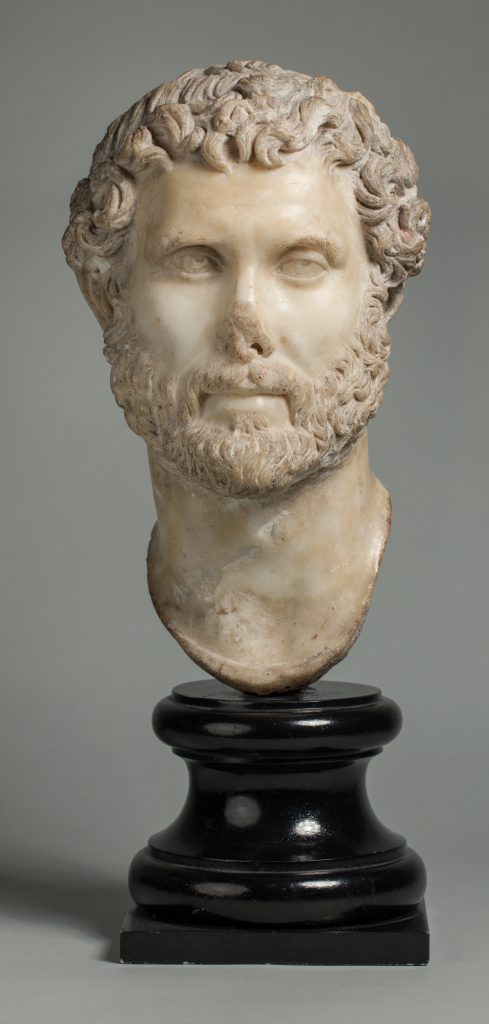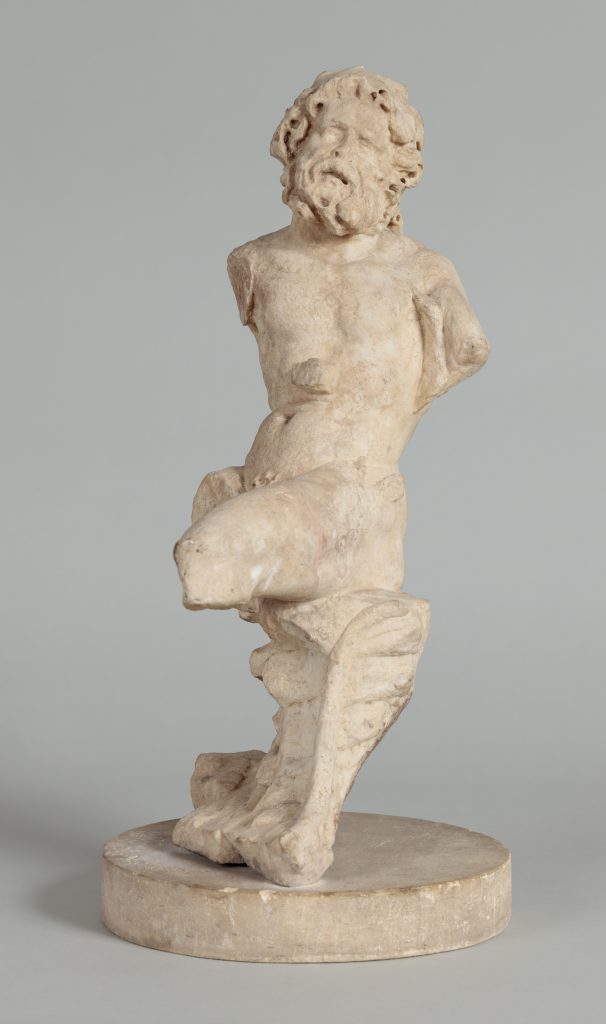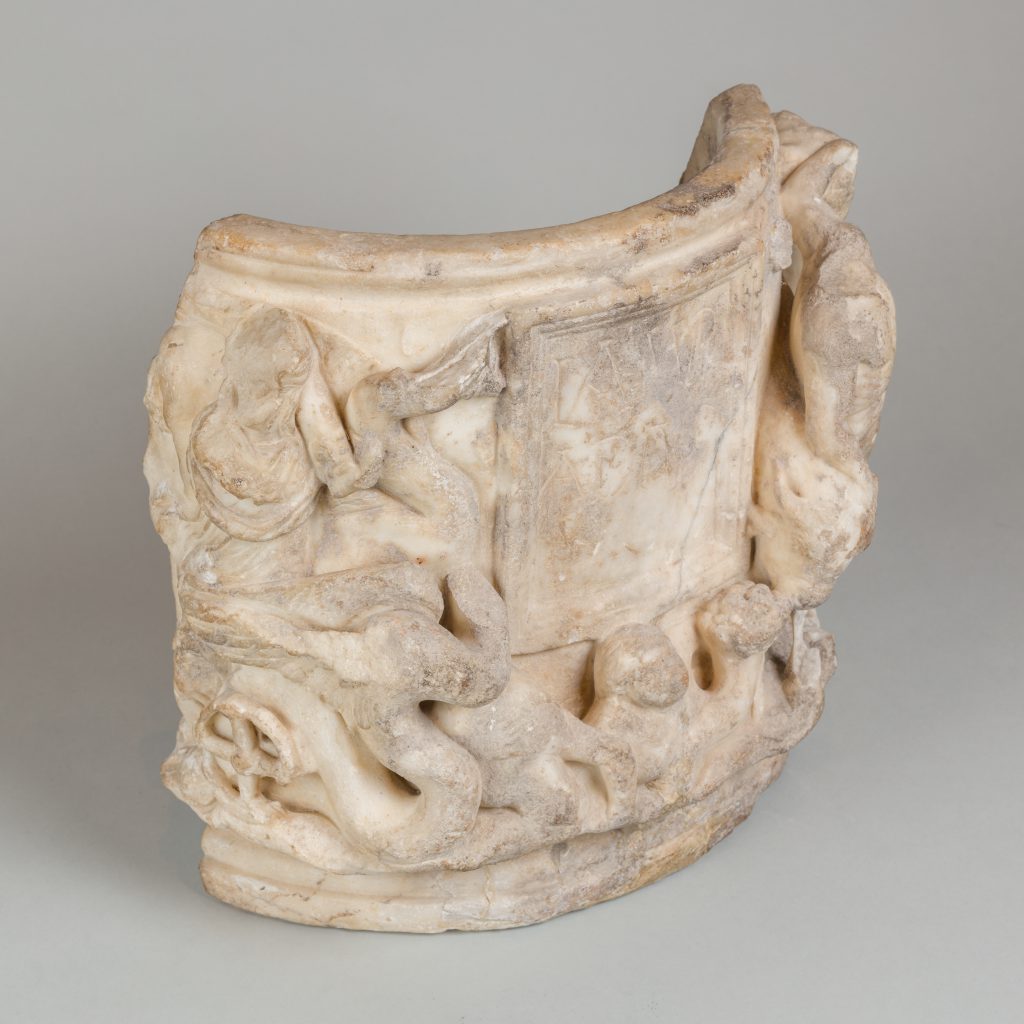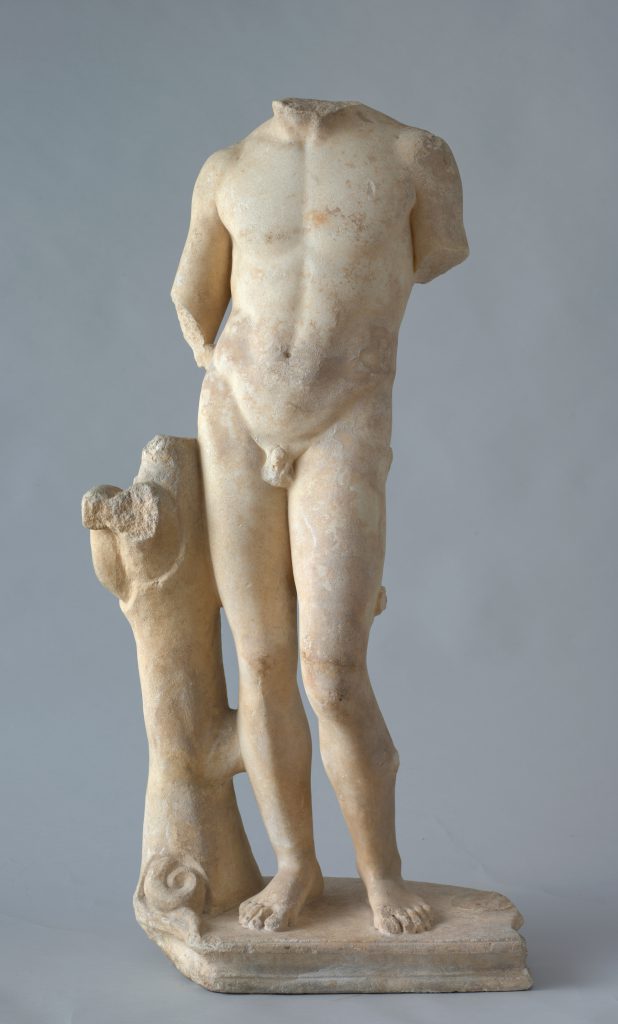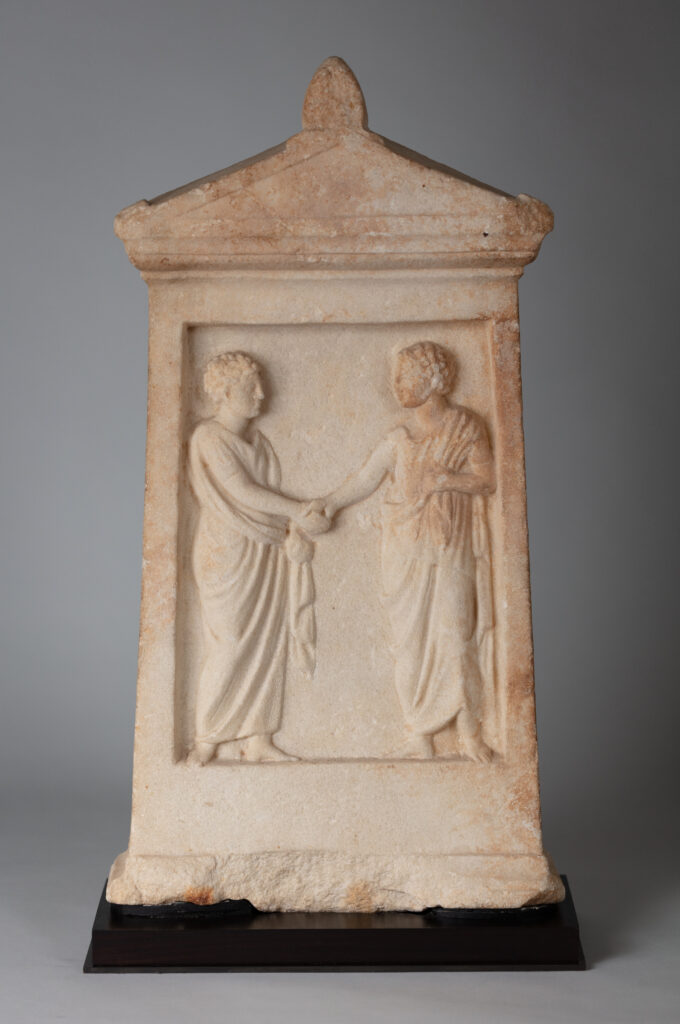Bust of George Washington
McGuigan Collection
This bust, which depicts George Washington in the guise of a proud Roman senator draped in a toga, is one of several neoclassical portraits of the revolutionary war general and first US president sculpted by American artist Horatio Greenough. Greenough chose to represent Washington in classical dress, a leading convention of the day for eminent figures, particularly politicians. Greenough’s depiction of Washington was influenced by several contemporary portraits of the president that he encountered during a stay in Boston from 1826–1828, including a plaster bust of Antoine Houdon’s (1741–1828) life portrait of Washington, then at the Boston Athenaeum. Greenough would later identify this Houdon bust as his preferred authority for Washington’s features. Greenough was also influenced by the ancient sculptures, classicizing art, and antiquarian culture that he partook in as a resident of Rome and later Florence, where he studied with the Italian sculptor Lorenzo Bartolini (1777–1850), whose neoclassical style and influence can be detected in this and other Greenough sculptures.
Greenough sculpted several busts of Washington for prominent Americans before receiving a commission from the United States Congress in 1832 to create a monumental sculpture of the first president. Commissioned on the centennial of Washington’s birth, the sculpture would be the first national monument to Washington, and it was intended for display in the rotunda of the Capitol building. Depicting Washington in the guise of Zeus, Greenough’s monumental statue became one of the most famous and most controversial representations of America’s revolutionary war hero and first president. In a manner fitting for Washington’s hallowed status as the foremost figure of the American pantheon, Greenough opted for the most radical depiction of Washington yet. His neoclassical sculpture completed in 1840 portrayed Washington in the guise of a seated and enthroned Zeus, king of the Olympian gods of ancient Greece. Greenough based his portrait on descriptions of the statue of Zeus at Olympia, a lost ancient sculpture by the fifth-century BCE Greek sculptor Phidias and one of the Seven Wonders of the Ancient World. When it was first displayed in the Capitol rotunda, Greenough’s choice to deify Washington as a modern Zeus and depict the American hero semi-nude shocked many of his contemporaries, and the statue was heavily criticized.
Greenough was exposed to antiquity through the classical curricula of the day, which culminated in his readings of classical literature at Harvard. Having developed a passion for antiquity, Greenough spent most of his career in Italy, beginning with a multi-year residence in Rome in the 1820s during which he continued to cultivate his appreciation for the ancient world through his reading (especially Homer) and his studies as an artist. During this period Greenough lived with fellow American artist painter Robert W. Weir (1803–1889) and frequented the city’s cast collections (particularly those of the French Academy) and sculpture galleries. He studied ancient statuary to develop his own style, which infused the reigning neoclassical aesthetic with a degree of naturalism. In 1828, Greenough set up a studio in Florence, where he would spend most of his career and complete his most important commissions, including the statue of George Washington.
As a national icon and foremost founding father verging on mythical status, Washington was a popular American subject for artists. Greenough’s classicizing sculptures of George Washington follow a longstanding sculpture convention of depicting prominent American figures in the guise of the ancients, a convention intended to add gravitas and dignity to the subjects. In capturing Washington’s features, Greenough relied on an earlier likeness by the French sculptor Antoine Houdon. Houdon’s sculpture, commissioned by the Virginia General Assembly for the rotunda of the State Capitol in 1784, was the first sculpture of the former president and the only one modeled from life, based on a life-mask taken by the artist during an extended stay with Washington at Mount Vernon. Greenough sought out a copy of one of Houdon’s busts modeled from life, eventually settling for a plaster copy of one of Houdon’s busts of Washington at Fontainebleau.
While early models of Houdon’s sculpture portrayed Washington in classical guise, Houdon ultimately depicted Washington in contemporary military dress, embedding classical references more subtly in the sculpture’s accoutrements. Another European sculptor, the Italian Antonio Canova (1757–1822), sculpted a monumental neoclassical statue of Washington for the North Carolina State House. Commissioned in 1815 and completed in 1821, the sculpture depicted Washington seated and in the guise of a Roman general, like Greenough’s later sculpture albeit fully dressed. Canova’s sculpture was destroyed by a fire at the State House building in 1831.
